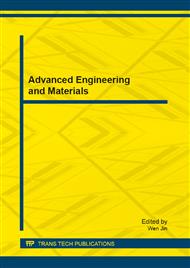p.457
p.462
p.468
p.474
p.481
p.486
p.490
p.494
p.499
Residual Strength of the CFRP- Strengthening Small Concrete Columns in Fire Situation
Abstract:
This paper presents the experimental results of a study carried out to investigate the performance of small scale concrete columns retrofitted with unidirectional carbon fiber-reinforced polymer (CFRP) in fire situation. This study aims at the effectiveness of CFRP through the contrast test. In order to observe the residual compressive strength, the specimen was heated to a target temperature and mechanically tested under axial compression. Other similar heated specimen was cooled down to the room temperature and mechanically tested too. This procedure was repeated by temperatures of 200oC, 300oC, 350oC, 400oC, 450oC, 500oC, 600oC, 700oC, 800oC and 1050oC. The heating inside the furnace was controlled in such a way that the average temperature in the furnace followed the standard time-temperature curve, ISO 834 [1]. The experimental results comproved that, due to low temperature resistance, the CFRP systems are not capable of safely and adequately enduring fire for any substantial period of time. This study evaluated a supplementary residual compressive strength of CFRP systems after cooling down to the room temperature. Finally, this study should benefit CFRP-fire research efforts by providing a similitude relationship for the testing of full-scale and small-scale specimens.
Info:
Periodical:
Pages:
481-485
Citation:
Online since:
February 2013
Authors:
Keywords:
Price:
Сopyright:
© 2013 Trans Tech Publications Ltd. All Rights Reserved
Share:
Citation:


